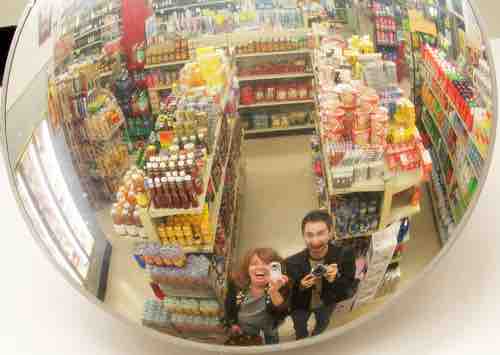Classifying Consumer Products
A classification long used in marketing separates products targeted at consumers into three groups:
- Convenience
- Shopping
- And specialty
Convenience Goods
A convenience good is one that requires a minimum amount of effort on the part of the consumer. Extensive distribution is the primary marketing strategy. The product must be available in every conceivable outlet and must be easily accessible in these outlets. Vending machines typically dispense convenience goods, as do automatic teller machines. These products are usually of low unit value, they are highly standardized, and, frequently, they are nationally advertised. Yet, the key is to convince resellers (i.e., wholesalers and retailers) to carry the product. If the product is not available when, where, and in a form desirable by the consumer, the convenience product will fail. From the consumer's perspective, little time, planning, or effort go into buying convenience goods. Consequently, marketers must establish a high level of brand awareness and recognition. This is accomplished through extensive mass advertising; sales promotion devices, such as coupons and point-of-purchase displays; and effective packaging. The fact that many of our product purchases are often on impulse is evidence that these strategies work. Availability is also important. Consumers have come to expect a wide spectrum of products to be conveniently located at their local supermarkets, ranging from packaged goods used daily (e.g., bread and soft drinks) to products purchased rarely or in an emergency, such as snow shovels, carpet cleaners, and flowers.

Convenience Goods
Convenience goods are typically found in convenience stores, such as the one pictured here.
Shopping Goods
In contrast, consumers want to be able to compare products categorized as shopping goods. Automobiles, appliances, furniture, and homes are in this group. Shoppers are willing to go to some lengths to compare values, and, therefore, these goods need not be distributed so widely. Although many shopping goods are nationally advertised, often, it is the ability of the retailer to differentiate itself that creates the sale. The differentiation could be equated with a strong brand name, such as Sears Roebuck, effective merchandising, aggressive personal selling, or the availability of credit. Discounting, or promotional price-cutting, is a characteristic of many shopping goods because of retailers' desire to provide attractive shopping values. In the end, product turn over is slower, and retailers have a great deal of their capital tied-up in inventory. This, combined with the necessity to price discount and provide exceptional service, means that retailers expect strong support from manufacturers with shopping goods.
Specialty Goods
Specialty goods represent the third product classification. From the consumer's perspective, these products are so unique that they will go to any lengths to seek out and purchase them. Almost without exception, price is not a principle factor affecting the sales of specialty goods. Although these products may be custom-made (e.g., a hairpiece) or one-of-a-kind (e.g., a statue), it is also possible that the marketer has been very successful in differentiating the product in the mind of the consumer. Crisco shortening, for instance, may be a unique product in the mind of a consumer, and the consumer would pay any price for it. Such a consumer would not accept a substitute and would be willing to go to another store or put off their pie baking until the product arrives. Another example might be the strong attachment some people feel toward a particular hair stylist or barber. A person may wait a long time for that individual and might even move with that person to another hair salon. It is generally desirable for a marketer to lift the product from the shopping to the specialty class. With the exception of price cutting, the entire range of marketing activities are required to accomplish this goal.